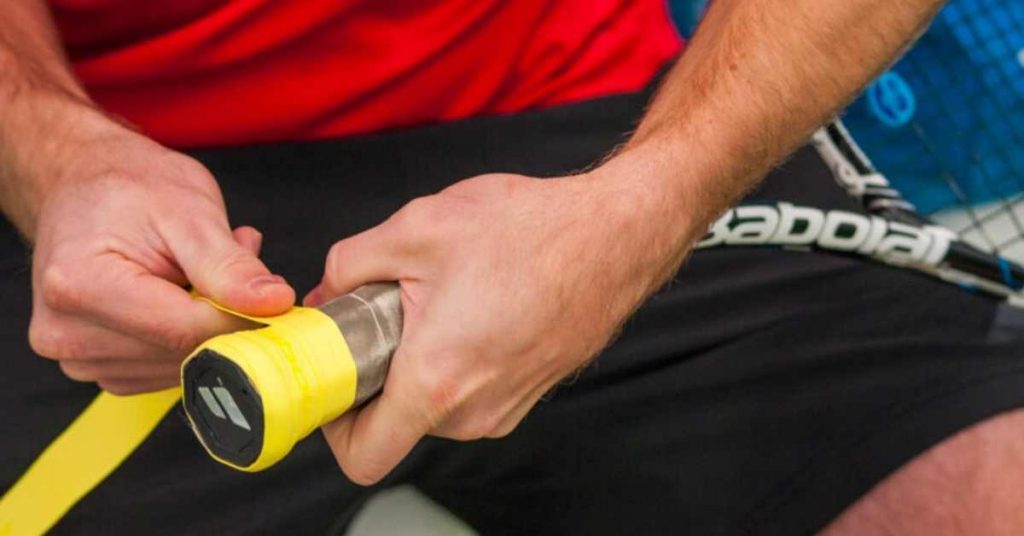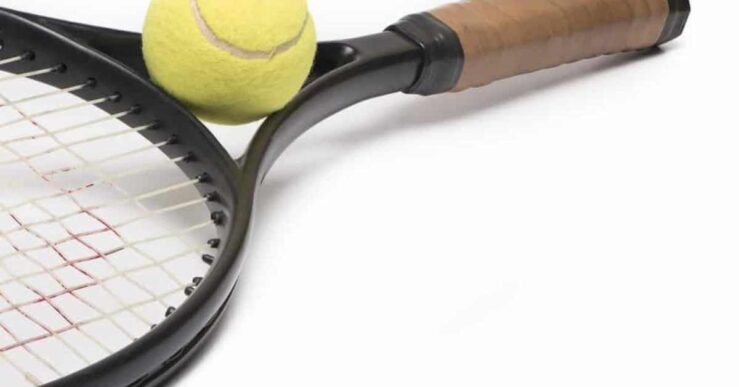Have you ever pondered the effects of giving your racquet a leather grip? Or do you wonder why leather replacement grips are so popular? Wondering what leather tennis grip advantages it might offer?
Additionally, perhaps you’ve been too afraid to give it a try. Michelle is joined by two leather grip experts, Chris and Troy, to discuss the advantages and disadvantages of using a leather grip on your racquet.
They discuss the fundamental advantages, the installation procedure, and their preferred leather grips brands. In a skilled sport like tennis, it is well known that pairing the right athlete with the right equipment is essential.
Leather Tennis Grip Advantages
In a sports store, you might see hundreds of tennis racquets on one side and only four distinct basketballs on the other as you move down the aisle. There is a purpose for each type of tennis racquet, even though it seems overkill.
There are a few aspects you should be aware of regarding the grip of your racquet, such as:
These simple suggestions can not only improve your game but also spare you the embarrassment that comes when a spectator’s nose is broken because your racquet slipped out of your hand. You can also read how to re-grip a tennis racquet and replace grips vs. overgrips.
Leather Grip
For a long time, the only grips used on tennis racquets were leather ones. But while this technology hasn’t advanced much, employing leather grips has advantages. Leather is more durable, heavier, and made of natural materials.
As a result, you can quickly identify your grip because all the bevels (panels) are becoming more apparent. The material seems to be more receptive, extending the amount of time before it becomes slick.
The strength creates exceeding expectations; the weight offers a unique feel that some players enjoy. Later on, cushion grips were developed as a gentler substitute. Since the name implies, there is extra cushioning, which results in a softer and more forgiving feeling.
Since the name implies, there is extra cushioning, which results in a gentler and more forgiving feeling. Additionally, this lessens sores and vibrations that are transmitted to the elbow. This style comes in a wide variety of hues, materials, widths, etc. Similar to choosing a car, choosing a racquet grip boils down to a desire for convenience above efficiency.
Absorbing Overgrip
Overgrips are extremely thin grips that are placed on top of the grip of a racquet. They are less robust but easier to alter and less expensive to purchase. You can rapidly add and/or switch overgrips to correct the problem if the tension of shots leads the racquet to rotate and twist in your hand.
Players with drier hands should use tacky overgrips since the grip’s stickiness increases adhesion. Overgrips that absorb shock are for athletes with perspiring palms. These athletes need a pliable surface to absorb their perspiration and keep their grip.
Some players even switch between sticky overgrips while playing indoors and absorbent overgrips when playing in hot and muggy weather.
Self-Installation
Given that the majority of players are inexperienced enough to install grips, this is more of a no-contest situation when it comes to grips. A grip can be placed over the handle by anyone, but a grip specialist can make it work for you.
You are all cordially invited to visit and experience the difference. A grip has various advantages when it is installed correctly. To lessen blisters and calluses, the grip first extends to the bottom.
This is not the case with recently purchased tennis racquets with factory grips. Second, you receive a smoother surface devoid of holes, grooves, etc. unless you explicitly request them. The very flaws that cause friction also make things difficult.

Third, the top of the grip is polished properly. I frequently witness players performing horror grip jobs in which the grasp is maintained up the throat without being properly sized. Fourth, you have nothing to lose because the majority of tennis shops don’t even charge for professionally installed grips.
Righty versus Lefty
Did you know that a right-handed player and a left-handed player must grip a racket differently? Your hand and fingers will fit with the tread of the grip differently depending on whether the grip is wrapped clockwise or counterclockwise.
Although lefties can have their rackets altered, they are typically made for righties. Even a one-handed or two-handed backhand can be executed with a certain grip.
Small vs. Large
The grip of a racquet is continually changing, just like the sport of tennis itself. Grip size helps skill for those specific grips when players transition from continental to eastern to western styles.
In general, a player can hit topspin and have strong grips more often when their grip size is smaller. Change to a larger grip size if you prefer to smooth down your shots. Tennis elbow can also be relieved by a larger grip.

What winning combination do you have, then? There is no definitive solution, but being informed and making the right choices can significantly alter outcomes. Don’t only purchase your equipment online and miss out on personalized service. Take control of your game and you’ll notice the difference.
Do I Need to Overgrip?
I firmly believe that this is a resounding yes! I enjoy the new, sticky feel of an overgrip because it provides me more assurance on the court. Since overgrips are thin, they don’t significantly increase the size of your grip. I always maintain that new grip feels because they’re cheap and simple to change.
Final Words
Because I once went through a learning curve and became familiar with every type of tennis grip, I always enjoy talking about tennis grips. Because I enjoy the solid, tight feeling on the handle, I often use a tennis leather grip with a nice overgrip on top.
FAQ’S
Making quicker, more precise grip changes are made possible by the highly defined and beveled edges that leather grips provide, which improve the “feel” of your racquet. However, since leather grips are a little heavier and less shock-absorbing, playing with them may be fairly tough on your hands.
Those used to playing with softer, more shock-absorbing grips may find their hands weary more quickly when using leather because it is not the most forgiving material. Leather isn’t nearly as tacky as contemporary synthetics, which is good news for players who don’t employ an overgrip.
Some individuals are still. Geoff Ogilvy, Adam Scott, and Jarrod Lyle all utilize leather grips from The Grip Master on the PGA Tour. Australian companies The Grip Master and these three golfers both hail from that country.
With a grip size of 3, a HEAD Finest Calfskin leather grip, two overgrips (one overlapping), and the traditional HEAD rectangular grip (pallet TK57), Novak’s grip more closely resemble a 4.
